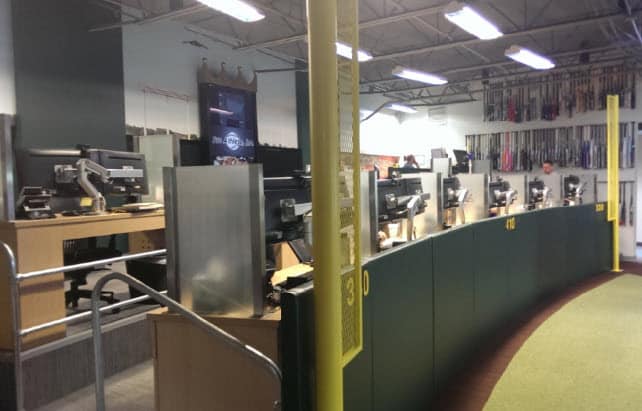There is no shortage of online advice for small business cost-cutting for CEOs looking to improve cash flow. I find the ideas and suggestions nearly dizzying for the casual reader. Where to get started? How to do it rightly? Is there a wrong way to cut costs?
One approach to cost management and containment is to start with two key concepts:
- Always start with a business’s cost structure. Every business has a cost structure comprised of many costs. If you need a visual for cost structure, think of a bucket of Lego bricks. The bucket is the cost structure, and the costs are the individual Lego bricks.
- When most business articles address cost cutting, they do not address the cost structure; they address individual costs. Examples include rent, utilities, payroll, marketing, and other individual costs to run the business. Individual costs can be added, modified, or subtracted without harming the overall cost structure of the business.
To recap, anytime we talk about costs, ask yourself if the topic is the overall cost structure or individual costs. There’s a big difference. Changing a company’s cost structure can take from months to years. Changing costs can take minutes or days with minimal repercussions to the business.
As we’ll see in the following sections, this is far more than an academic discussion. Once you understand the basic concepts, applying these ideas could lead to immeasurable possibilities in your business.
A Cost Structure Example That Hits Close to Home
I live in beautiful Bluff Creek Estates in Columbia, Missouri. For about one year, our city discontinued picking up recycled trash that residents had pre-sorted. Their explanation was labor issues. They stated they could not find enough people to staff the trucks on pickup days.
Or was there another reason? Was labor too costly? Regardless, this was not just a Columbia, Missouri issue. A few years ago, a trend started with one-person trucks that could lift the recycled trash dispensers with a mechanical arm. With these new models, a second person is no longer needed. Accordingly, my city made a significant investment in these new trucks.
I’m happy to report that our recycled trash is now picked up every two weeks. Our municipality required new trash dispensers, but that was a small price to pay to restart this service. I’ve not seen any payback studies, but the return will be average to modest due to labor cost savings for this pickup service.
Here’s the question: Is this a cost-cutting project or a change in the cost structure? If you say both, you are correct. Costs have dropped in this scenario but dropped because of the change in the overall cost structure. The cost structure changed from a highly manual process to one that’s more (but not completely) automated.
Changes in the cost structure of any business are typically preceded by the following:
- A strategic reason or a compelling problem that requires a change
- A significant up-front investment leading to lower costs
- A commitment to a new way of doing business that may require new skills and capabilities
There are other examples of cost structure changes. Here are a few more:
- Self-checkout at retail stores
- The move to a remote workforce
- Replacing an insurance provider with a self-insured medical plan
- Using machine learning to improve the routes of a truck fleet in maintenance repair businesses, short-haul services, and any other business requiring a fleet to implement its value proposition.
- A radical reengineering of the bill of materials for a finished good (you’ll see an example at the end of this article).
Many changes in a company’s cost structure can be classified as best practices occurring throughout a firm’s industry. That’s probably always going to be the norm for small business owners.
However, think in extremes. Start imagining a world of ‘what if scenarios’ and use outsiders as a sounding board for your ideas. Changes in cost structure are hard, slow, and costly. But this is where major cost changes occur, not to mention the potential for a heightened customer experience.
“Danaher is a successful firm that sees costs as investments. Some are good, and some are bad. Danaher doesn’t work to reduce costs; instead, it tries to weed out poor investments while keeping the good ones—day in and day out, during both booms and busts.”
HBR – Cost Cutting That Makes You Stronger, July-August 2023
Continuing Our Example, But for Trimming Costs
I’m not a car guy. Besides, I’m the guy who drove a Gremlin in high school. I learned to drive a stick with the ugliest-looking farm truck a 17-year-old would never want to be caught in (so I ducked a lot).
Still, I’m no gearhead; if you are, I’m envious. However, I have a general idea of how costs could be trimmed for a fleet of trash trucks with mechanical arms:
- Changing to a high-priced air and/or fuel filter with a longer life
- Better training for all drivers on techniques to improve fuel efficiency
- The implementation of GPS trackers to potentially reduce auto insurance premiums
- Use fuel cards that pay higher cash-only rebates from the merchant
- Take advantage of experts who can design effective preventive maintenance programs that reduce costs
We don’t need a strong definition of costs compared to cost structure. Still, addressing the differences is necessary to help us understand priorities in terms of costs and the approach to managing and reducing costs in the right circumstances.
While most business owners have a cost-conscious mindset, that thinking does not always trickle down to the rest of the organization. If that’s true in your business, this change starts with education and examples. Adopt a culture of improvement and cost efficiency by rewarding those with implemented ideas. Improvement will occur through trial and error.
A Final Way to Think About Costs and Cost Structure
You now know the difference between costs and cost structure. If I were to ask you about the cost structure of your business, I’d like you to explain it in three broad bullet points or fewer. Furthermore, I’d expect to hear about the main costs consumed by that cost structure.
But there is a final way to think about costs and cost structure:
- The costs to create capacity
- The costs to maintain capacity
- The costs to improve capacity
All other costs are merely support or complementary costs. For example, marketing and sales feed a company’s capacity to serve customers. General and administrative costs are required to allow the company’s capacity to keep serving its customers.
Capacity is synonymous with cost structure. It’s the big bucket with all the Lego pieces representing individual costs.
In any cost-cutting effort, we must ask ourselves if we are inadvertently harming or reducing our capacity if sales levels have not dropped. Stated differently, anytime we think about costs and cost structures, we should consider that thinking through the lens of capacity creation, maintenance, or improvement.
Let’s Test and Expand Your Knowledge
I have no research to prove this, but most executives are very good to extremely sharp when it comes to rethinking their firm’s cost structure(s). On the other hand, CFOs, controllers, and analysts are naturally good at spotting waste or inefficiencies within existing cost structures. That’s not a good or a bad thing. It just is.
To test your knowledge above, let’s start with three simple questions:
- Why does understanding the difference between a cost structure and costs matter? As you think about the answer, assume that you will have to give it to everyone in the business, down to the lowest-paid employee in your organization.
- Think back to the last time your company cut costs. Was the change to costs or the cost structure? Did you achieve your desired outcome?
- Think about the cost structure that supports your business’s capacity to sell products or services to its client base. What could you do now to create, maintain, or improve capacity? Would costs go up, or do they need to go down?
Finally, if this is a topic where you would like to continue your learning with more ideas, here are two links:
- Search the Danaher Business System in any browser. Many results will point you to documentation about a culture of continuous improvement. This PDF is a great starting point. I wish there were a short book for small business executives on this topic, but this should lead to creative thinking on building a company’s mindset of continuous improvement and cost management.
- When Toyota first launched the Prius, it was not a success story. But they were okay with that. They wanted to learn what they didn’t know and kept iterating until they got it right. A great story starts on page 235 of The Harada Method, explaining how “They tripled the battery capacity while reducing its size by two-thirds, and they improved the process of making the battery to reduce the cost.” This is one of my favorite examples of radically changing a cost structure.







